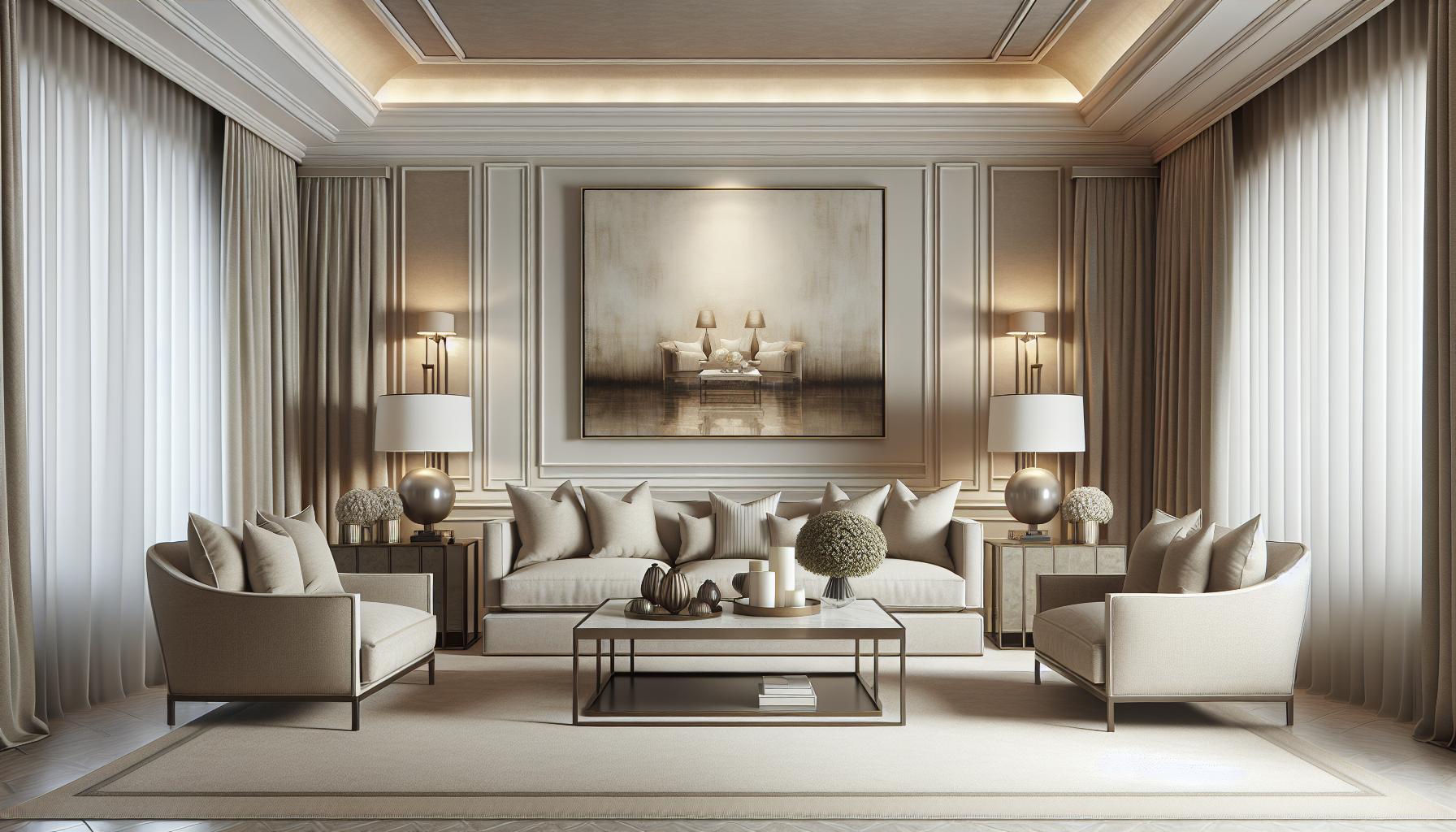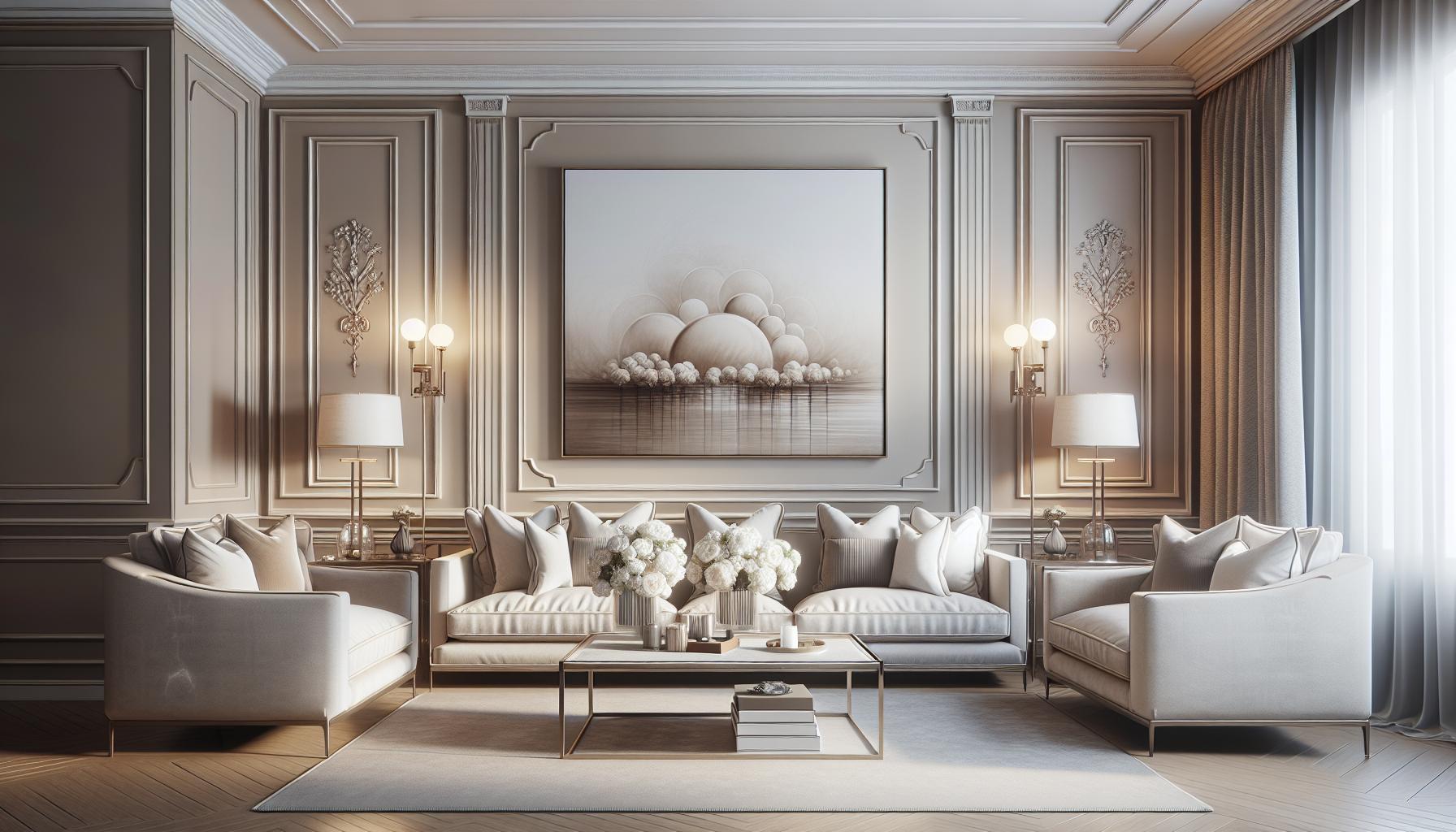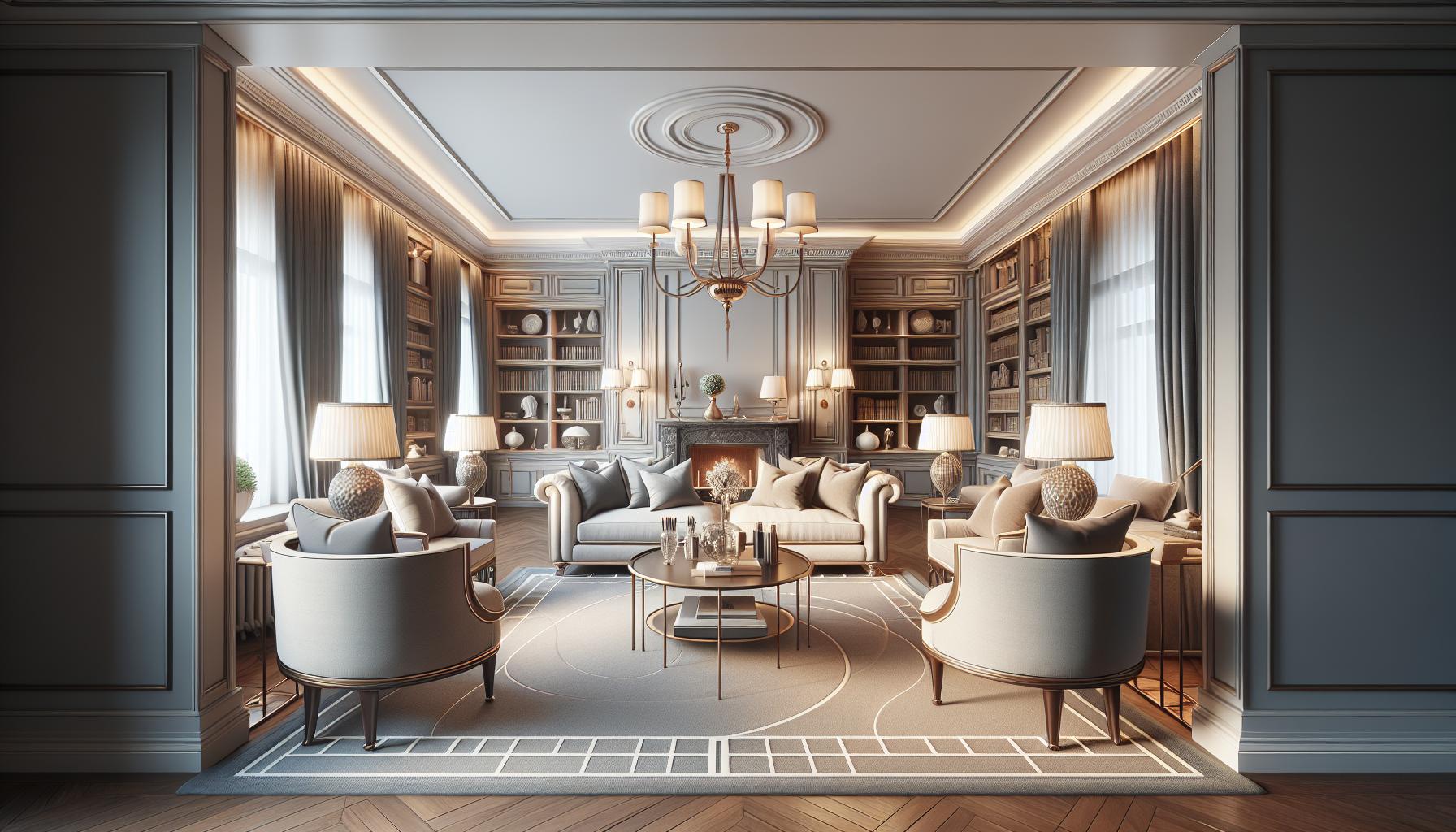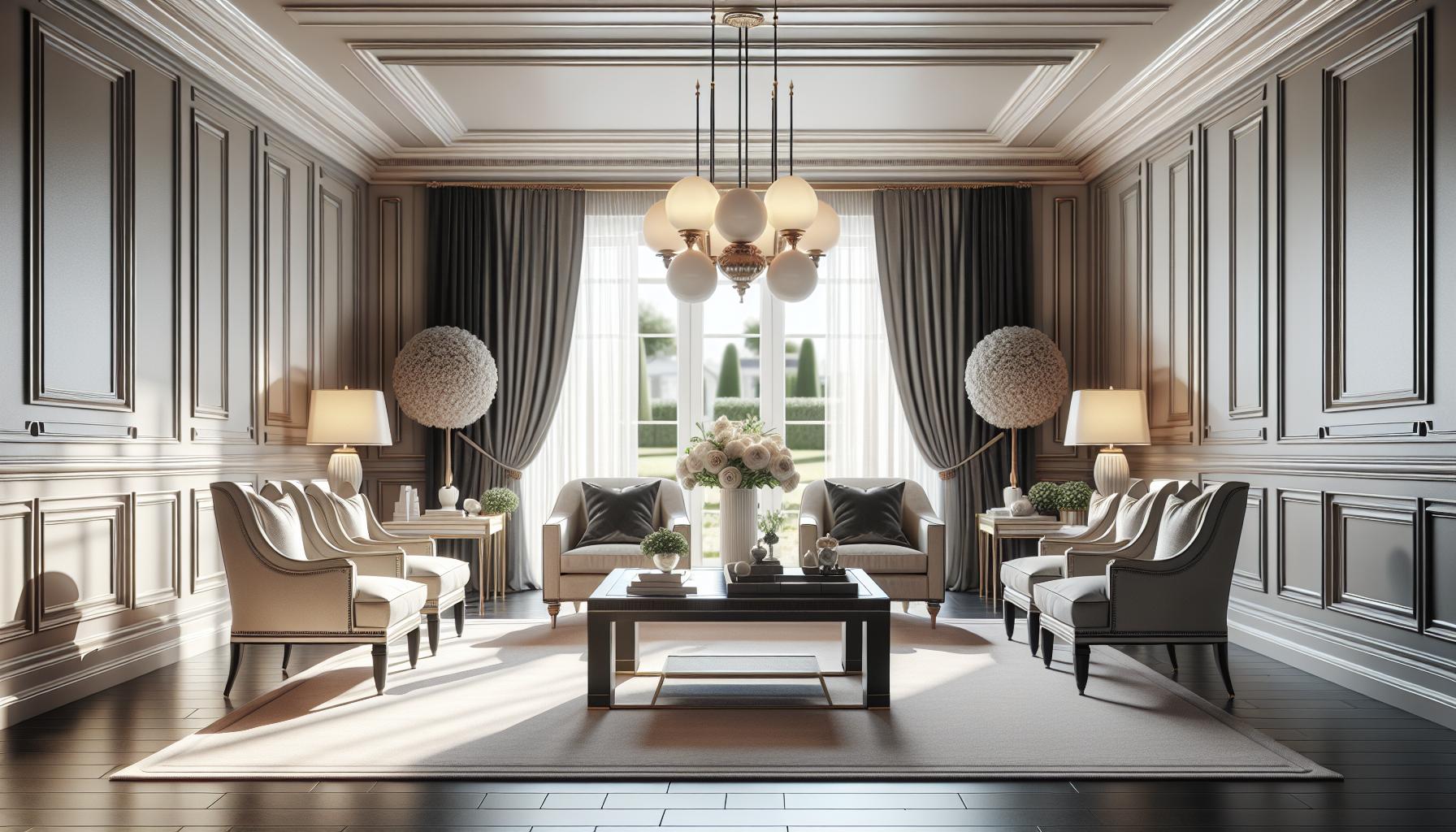
Stepping into a room that feels just right often means there’s a touch of symmetry at play in the interior design. Symmetrical interior design, with its balance and harmony, creates spaces that are not only visually appealing but also soothing to the soul. It’s all about mirroring elements, whether it’s a pair of matching lamps or a perfectly aligned seating arrangement, to bring a sense of order and calm.
I’ve always found that symmetry in design isn’t just about aesthetics—it’s about crafting an environment where everything feels in its rightful place. This approach can transform any space, from a cozy living room to a grand hallway, into a haven of tranquility. By understanding the principles of symmetrical design, anyone can enhance their home’s ambiance, making it both inviting and effortlessly stylish.
Incorporating symmetry doesn’t mean everything has to be identical. It’s about finding the right balance that resonates with your personal style while maintaining a cohesive look.
Key Takeaways
- Symmetrical interior design enhances balance and harmony by mirroring elements within a space, creating a serene and visually appealing environment.
- Key elements of this design approach include furniture arrangement, color coordination, and utilizing architectural features as natural anchors for symmetry.
- Symmetry simplifies space planning by following clear, repeatable patterns, making the design process efficient and intuitive.
- Popular styles incorporating symmetry include Neoclassical, Minimalist, and Modern Traditional, each using juxtaposition to enhance aesthetics.
- Achieving symmetry involves identifying a focal point, creating mirror imagery, and using accessories strategically to maintain a cohesive look.
Symmetrical Interior Design
Symmetrical interior design involves arranging elements in a room to create balance and harmony. This design principle often features pairs of similar items such as matching chairs or twin bedside tables. Each side of a central point mirrors the other, enhancing unity and aesthetic appeal. During my design projects, symmetry offers a reliable method to cultivate a sense of order and serenity, providing an inviting atmosphere in any space.
In this style, the focus isn’t solely on identical elements; the goal is to achieve visual equilibrium. I often align artwork, use repeated patterns, or incorporate similarly sized furniture pieces to maintain balance. Color schemes also play a crucial role. By matching colors across the space, I ensure the design feels cohesive and harmonious.
Symmetrical design adapts to personal style preferences. It’s about creating a balanced ambiance while reflecting individual tastes. For instance, I might use different textures or materials that complement each other, instead of using identical items. This approach ensures the design remains engaging while staying true to the principles of symmetry.
Benefits Of Symmetrical Interior Design

Symmetrical interior design offers several advantages that enhance the overall ambiance of a space. Its emphasis on balance and harmony makes it a popular choice for creating serene environments.
Balance And Harmony
Symmetrical design creates balance by ensuring elements are evenly distributed. This balance fosters a sense of peace and order, making spaces feel calm and organized. In my experience, aligning pairs of furniture or decor items helps maintain this harmony, providing a tranquil and aesthetically pleasing environment.
Enhanced Aesthetic Appeal
Symmetry enhances aesthetic appeal by creating visually harmonious spaces. Mirrored arrangements, like matching sofas or symmetrical artwork, draw the eye evenly across a room. This visual equilibrium not only boosts attractiveness but also makes the space feel more complete and thoughtfully designed. I find that using symmetry often results in elegant, inviting interiors.
Simplified Space Planning
Symmetrical design simplifies planning because it follows clear, repeatable patterns. Arranging symmetrical elements saves time and effort while ensuring a cohesive layout. For instance, positioning matching lamps on either side of a sofa automatically creates a focal point. This structured approach aids in organizing spaces efficiently, making the design process smoother and more intuitive.
Key Elements Of Symmetrical Interior Design

Symmetrical interior design thrives on balance and harmony to create visually appealing spaces. Several key elements contribute to this design approach.
Furniture Arrangement
Furniture arrangement in symmetrical design involves mirroring or aligning pieces across a central axis. Placing matching lamps on either side of a sofa or using identical armchairs opposite each other establishes visual balance. Even with varied pieces, aligning or strategically positioning them around a focal point creates symmetry.
Color Coordination
Color coordination plays a vital role in maintaining symmetry. Use of consistent color palettes throughout a room ensures visual coherence. Repeating color patterns or matching hues across different design elements like curtains and cushions enhances symmetry. Complementary shades add depth while preserving balance.
Architectural Features
Architectural features often act as natural anchors for symmetry. Fireplaces, windows, and door frames provide natural axes for mirroring decor elements. Building upon these features, such as aligning bookshelves or using paired wall sconces, amplifies the sense of order. The architectural symmetry supports a cohesive and structured design.
Popular Styles Featuring Symmetry

Symmetrical interior design finds its expression across various popular styles, each leveraging balance to enhance aesthetics. These styles demonstrate how symmetry contributes to a cohesive and harmonious environment.
Neoclassical
Neoclassical design revolves around elegance and grandeur, using symmetry to instill balance and order. This style frequently uses matching columns, mirrored wall decor, and evenly spaced furnishings. Ornate moldings and symmetrical layouts frame windows and doorways, accentuating the sense of proportion. In these interiors, a central focal point like a fireplace often anchors the room, with furniture symmetrically arranged around it. This technique ensures that Neoclassical spaces exude a sophisticated yet structured atmosphere.
Minimalist
Minimalist design emphasizes simplicity, where symmetry plays a crucial role in maintaining clean and uncluttered spaces. This style often features paired furniture, such as identical chairs or tables, to create balance without overwhelming the eye. Color schemes tend to be neutral, with black-and-white combinations recurring to reinforce symmetry. Aligning art or decor items along a central axis maximizes the sense of order. The minimalist approach uses symmetry to achieve a tranquil and serene environment by stripping away excess elements.
Modern Traditional
Modern traditional design is a blend of contemporary and classic elements, harmonized through symmetry. Balancing traditional furnishings like armchairs or sofas on either side of a coffee table exemplifies this style. Symmetrical window treatments and bed setups add to the layered sophistication. The style often incorporates modern accents while maintaining a traditional symmetrical framework. This fusion results in spaces that feel both timeless and updated, where order and elegance coexist.
How To Achieve Symmetry In Your Space
Achieving symmetry in interior design transforms spaces into balanced and harmonious environments. It’s about creating a cohesive and visually pleasing layout that enhances tranquility.
Identifying A Focal Point
I start by identifying a focal point to anchor the space. Key elements like a fireplace or a striking piece of art serve as visual anchors. The focal point draws the eye and provides a reference for arranging other elements symmetrically around it. For instance, if the focal point is a fireplace, I might place matching chairs on either side to enhance balance and harmony.
Creating Mirror Imagery
I employ mirror imagery by arranging items in pairs to create visual harmony. This involves using objects like lamps, furniture, or even plants in symmetrical pairs. If there’s a sofa in the living room’s center, I balance it with identical chairs on each side. Mirror imagery extends to wall art, where I might pair two similar-size frames to flanking a central piece, reinforcing the overall symmetry.
Using Accessories For Balance
Accessories play a crucial role in maintaining balance. Decorative elements such as vases or cushions contribute to symmetry. I often use matching sets or pairs on either side of the room to ensure consistency. When working with color schemes, I might select similar shades or patterns to provide a unified look, reinforcing symmetry without overwhelming the space. Using accessories wisely ensures a balanced and aesthetically appealing design.
Visually Appealing and Soothing Designs
Symmetrical interior design is a powerful tool for creating spaces that are both visually appealing and soothing. By focusing on balance and harmony, symmetry transforms any room into an inviting haven. Whether you’re drawn to Neoclassical elegance, Minimalist simplicity, or Modern Traditional charm, symmetry can be adapted to suit your personal style. It’s not just about using identical elements but about achieving a cohesive and balanced look. With practical tips like identifying a focal point and using mirror imagery, you can easily incorporate symmetry into your home. This approach not only enhances aesthetic appeal but also promotes a serene and organized environment, making it an essential consideration for any interior design project.
